Horsham Botanic Gardens opened in the 1870s or 1880s. Each curator since then has a path or walkway named after him, and an ancient tree has now become a commemorative sculpture.
My experience at the gardens
Horsham Botanical Gardens are quite small compared to others we have visited already, but are as usual a really pleasant place to stroll around, with lots of benches in shaded spots to sit and read a book, or have a sandwich, as we wanted to do on this spring morning, with the air humid ahead of oncoming thunderstorms, and the varied fragrances of the flowers out all around the gardens making it a feast for the senses.
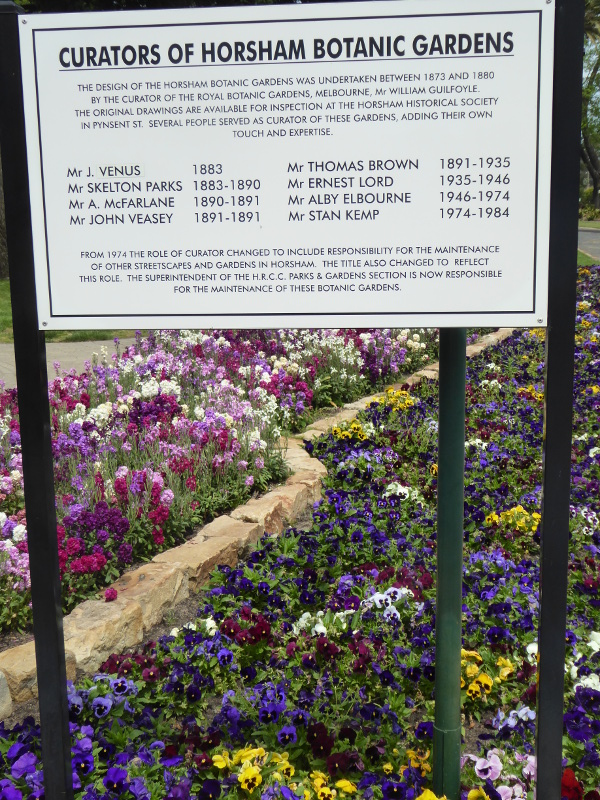
The signpost directly in front of you as you enter the gardens lists the names of all the curators here from the date the gardens opened in 1883 (at least I assume that is when they were completed – I think their construction and design began in 1873, and I did find articles on Trove talking of a curator in 1882, so I’m not 100% sure of my dates here).
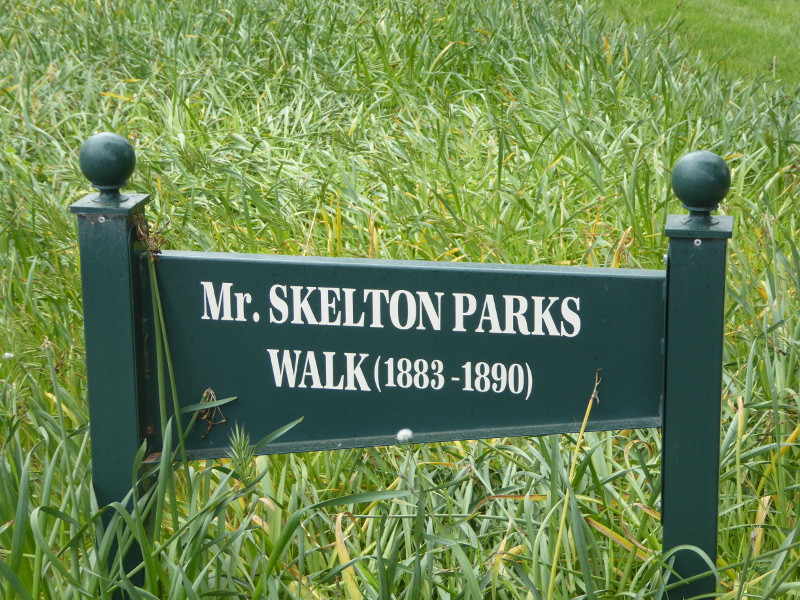
I did like the way each curator is then remembered through further signage, and naming of pathways through the gardens.

And one of the highlights of the gardens is this extraordinary sculpture carved out of a sugar gum tree planted during the period Thomas Brown managed the gardens to commemorate the year his son was born. What a fantastic memorial made from a tree that was sadly dying anyway.
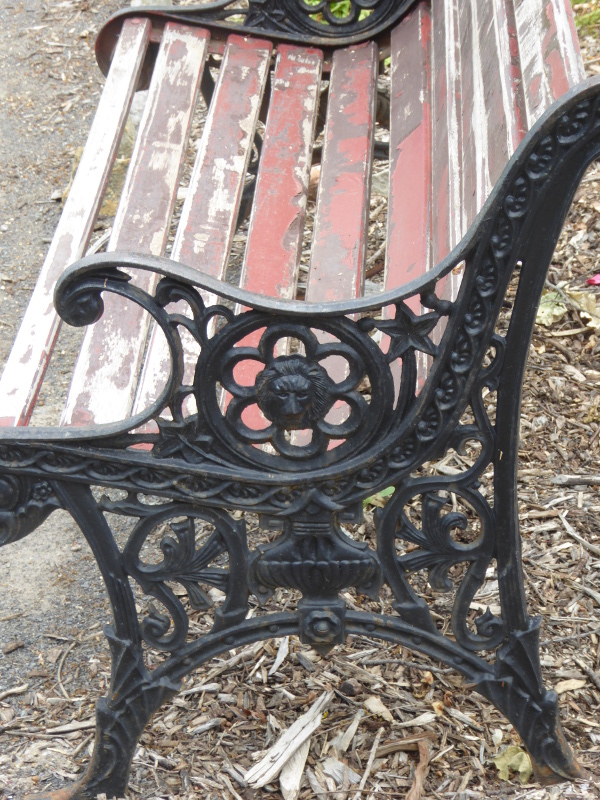
We quickly found a bench under some elm trees to have our picnic lunch. As in other botanical gardens in Victoria, we were struck by just how many Dutch and English elms survive down here, when the species has been virtually wiped out across Europe by Dutch Elm Disease.
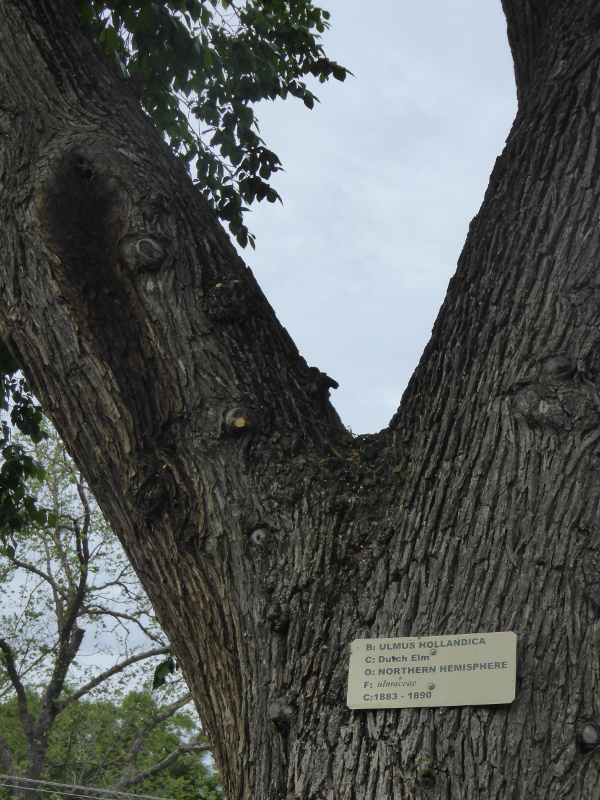
The mosquitoes clearly thought they had found their own lunch as soon as I sat down, though, and with my hands full and lunch perched on my lap, I struggled to swipe or crush them before they got their juicy mouthful. Lovely though it was to sit and watch passers-by and take in the views, we decided to walk on as soon as we’d finished our food.
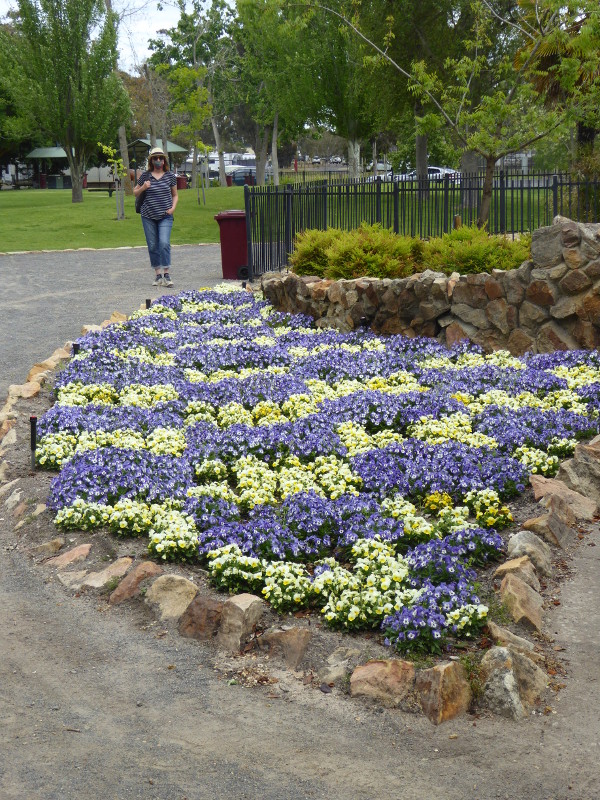
Some of the flower beds – like these pansies – were stunning.
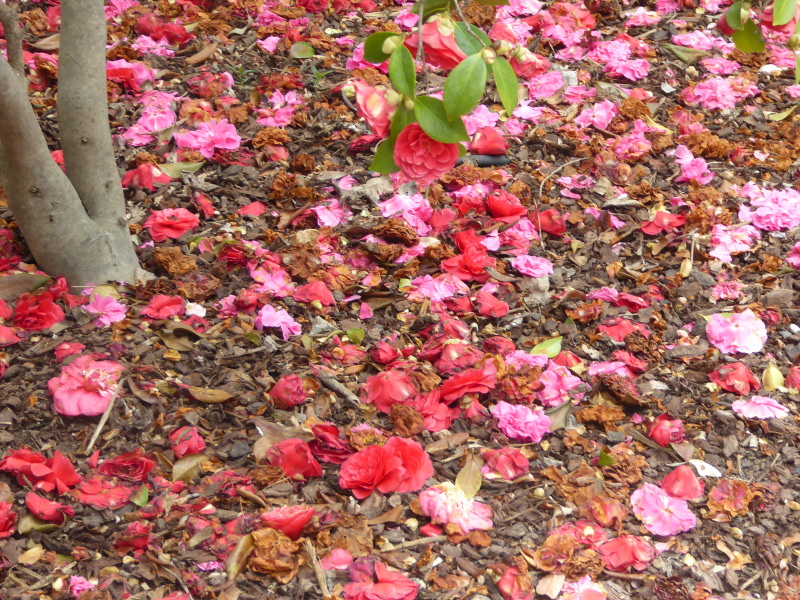
We were probably a week or so too late for the best of the camellias, but they left this regal-looking carpet of red on the soil underneath the bushes in that bed.

And the wisteria arch must be gorgeous when fully in bloom – again probably a fortnight before our visit.
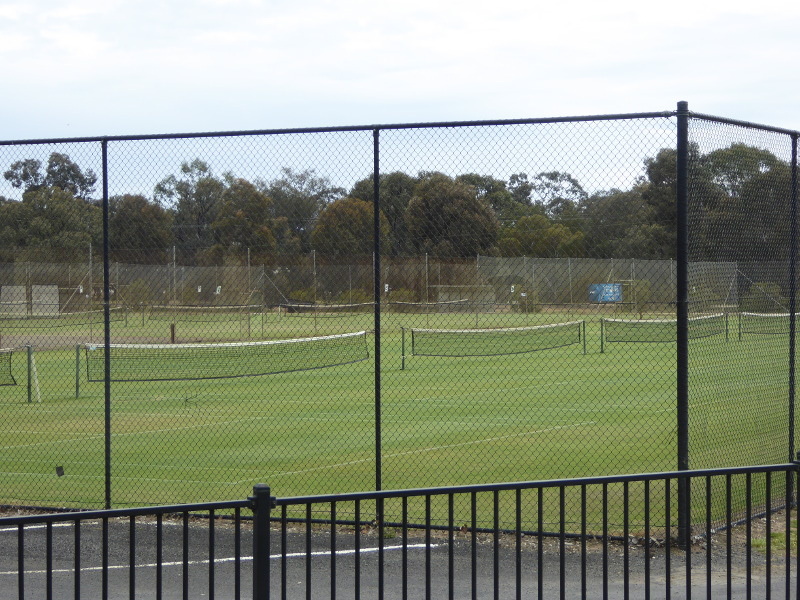
I had read of the problem having enough tennis courts for the Horsham Championships held here in 1922. I guess some of these courts may have been built after that, but with 24 stunning courts (nearly all of them grass in looking in tip-top condition), it’s hard to imagine why they needed that year to go and use Mr Davey’s private court – I’d love to know where that was, mind…
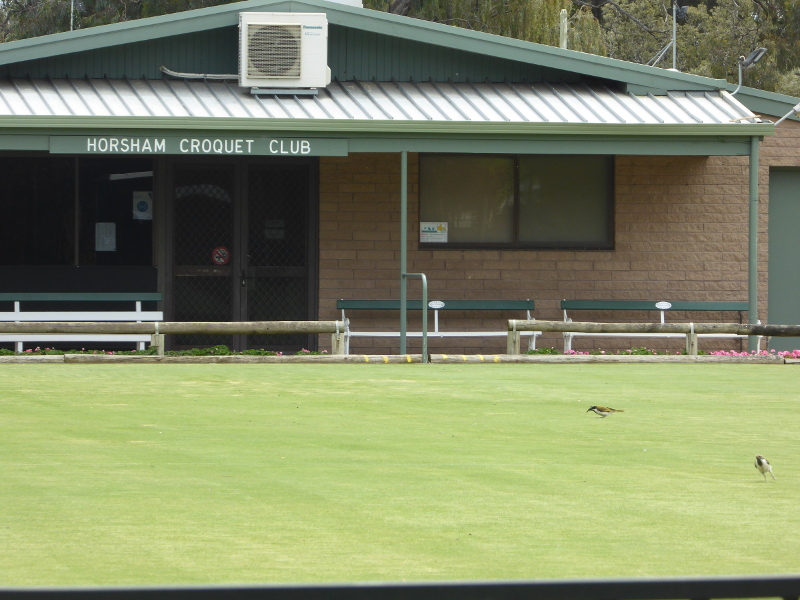
Next to the tennis courts is the croquet lawn, with its vintage clubhouse, and nobody playing on either the tennis or croquet facilities (what has happened to Australia’s outdoor fitness culture??).
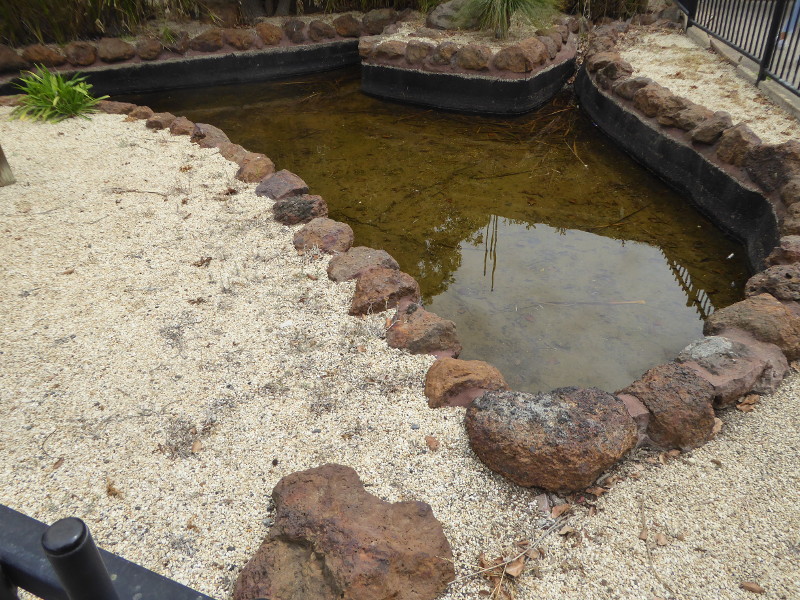
In front of the toilets is this pond carved in the form of a map of Australia, though it took someone pointing out Tasmania to me for me to realise which way up it actually was.
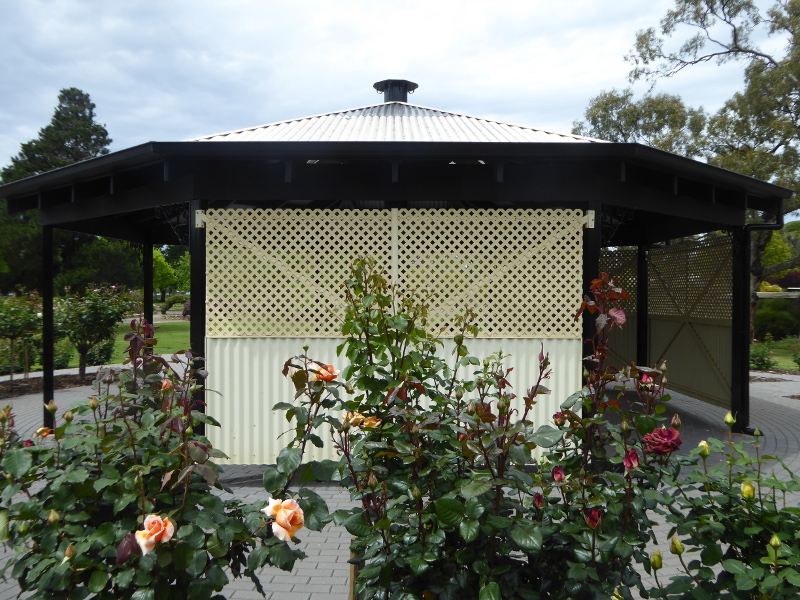
Then there was the rotunda, the walls of which didn’t look that vintage, but the benches inside, especially curving around the central pillar, looked of a stunning (and vintage) design.
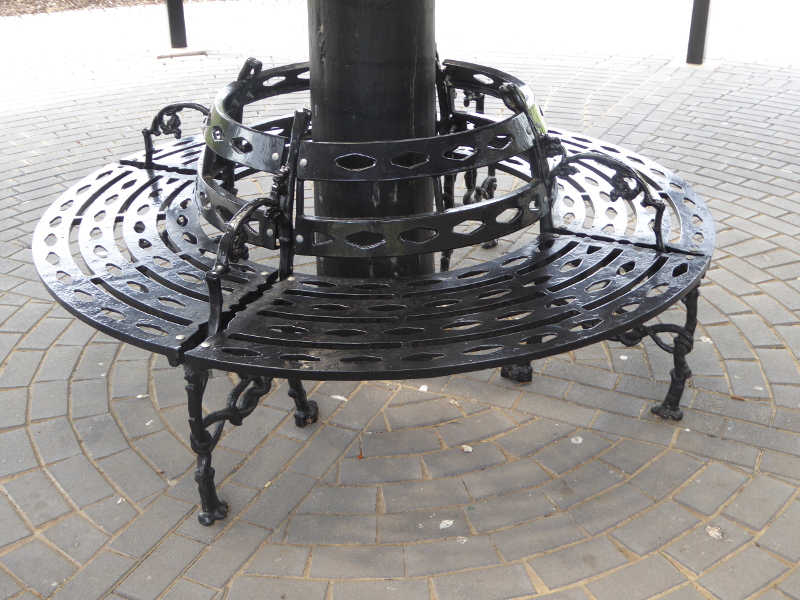
I also liked the ironwork on the various benches dotted all around the gardens. I’m not sure what the lion’s head represents, though, in Horsham?
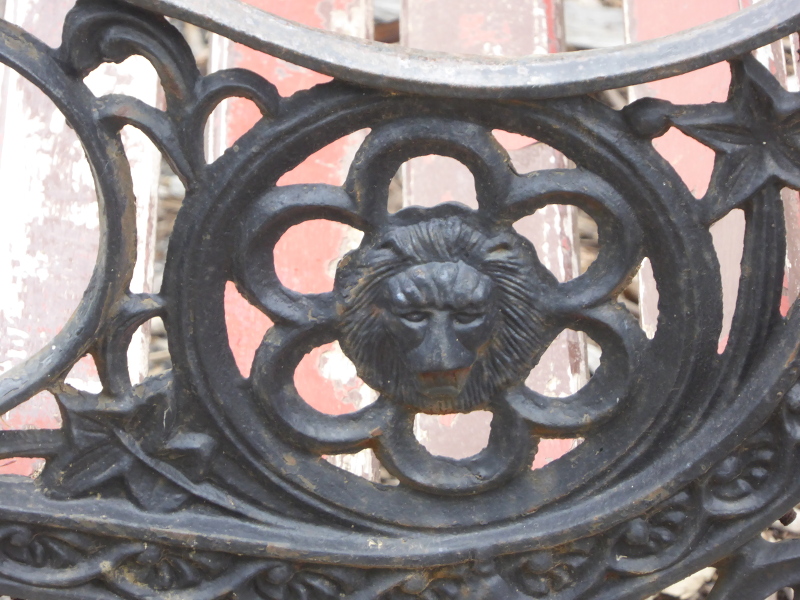
Since I had read stories of picnickers going for a dip in the river after visiting the Botanical gardens, I wanted to spot where the river even was. These days, to get to the riverbank, you need to go through a secure gate (the gardens are only open from dawn to dusk, so I guess that figures), past the possum sign, and over the road to a fairly wide stretch of water, with tall gum trees hanging over it.

No possums to be seen on the day we were there, but a mother duck was holding up traffic as she escorted her brood over the road towards the water.

It’s a tranquil place is Horsham Botanical Gardens. I do like the swishing sound of poplar trees in leaf, but overall it was a peaceful spot, with the squawking green parrots preferring the riverside to break the silence than the tall trees of the gardens themselves.
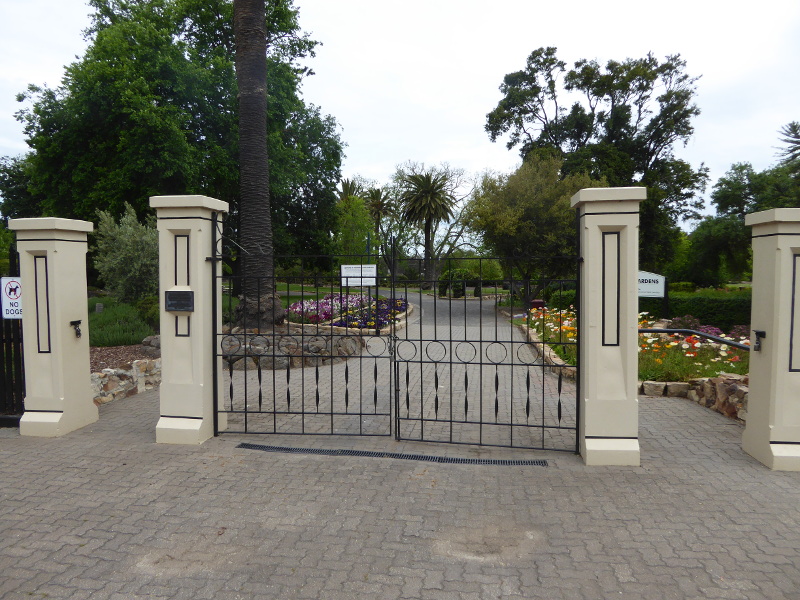
We saw maybe a dozen or so other people around the gardens while we were there, but sadly no kids using the rather clever Q-coded tree signs, from which people with the app could listen to Ent-like story-telling trees as they walked around. I’d have loved that if I had come here as a youngster…
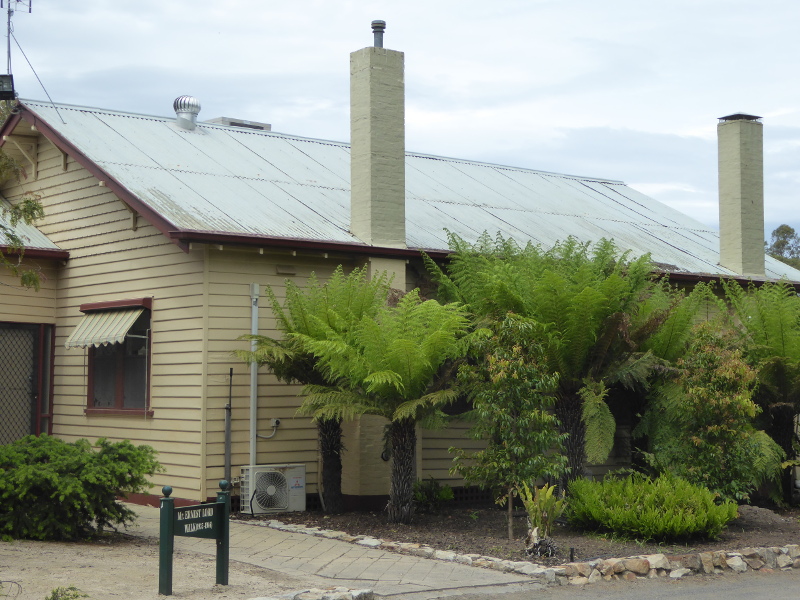
Finally, this weatherboard cottage in one corner of the Gardens may well once have been the home of those curators listed at the entrance, but there was no signage to confirm this so we can’t be sure.
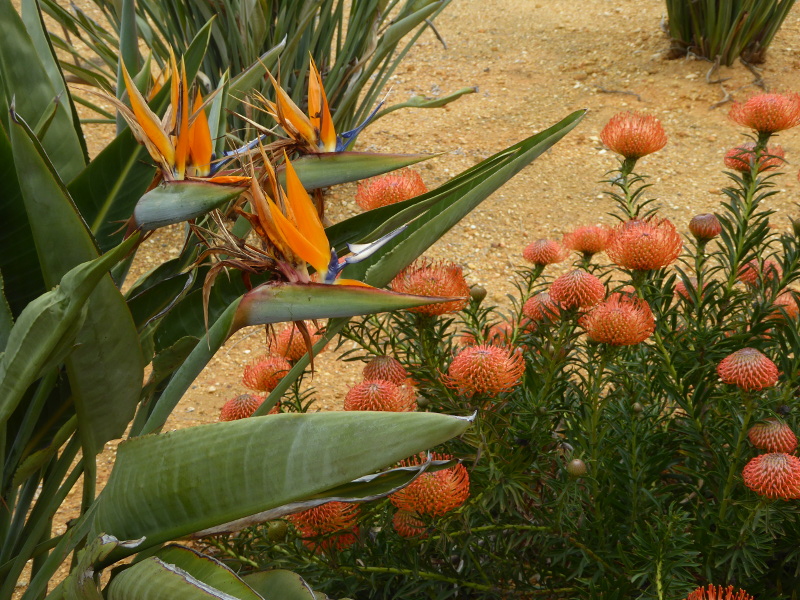
But, although it may have been the time of the year being ideal for spring blooms, Horsham Botanic Gardens were almost certainly the most colourful yet on this tour of botanic gardens in Victoria.
Practicalities
Horsham Botanic Gardens are open from dawn to dusk daily.
Lots of benches both under cover and under trees. Lovely ironwork as ever on some of the vintage benches.
There are toilets, and the pond in the shape of Australia is right in front of them.
.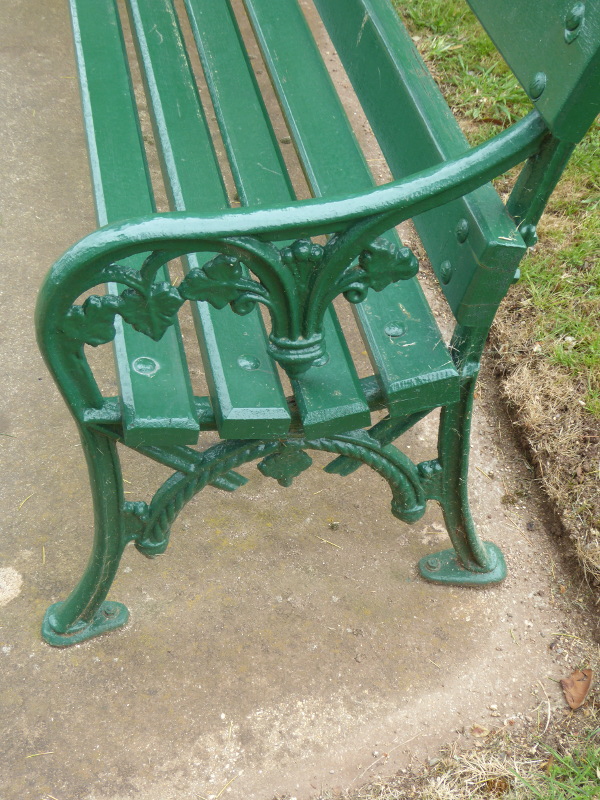
History and stories
Horsham Botanic Gardens opened in 1873 but there were no news reports in Trove to mark that occasion.
1882 saw the first articles about a fund-raising concert for the Gardens, followed by a demonstration of the latest farm machinery, straight from the USA. And there were later experiments with Mexican wheat grown in the gardens to test their ability to survive extreme dry.
An early curator had a cunning trick to deter the theft of flowers from the gardens. In October 1882, he attached fish hooks by pieces of wire to flowers, meaning thieves risked getting their hands caught up in the hooks. I’m not sure that’d be legal these days. (I’m not sure why, whoever he was, he didn’t get a mention in the list of curators by the entrance to the Gardens).
There was a big discussion in the Council in 1883 over whether the gardens should be for pleasure or for instruction; whether the focus be on organising trees and plants by genus and origins or focus on pathways, benches and attractions to entertain the passing pedestrian. I’m not sure what the outcome was at the time, but the Gardens in 2021 reflect both sides of the argument fairly well.
An 1883 advert for a new gardener to manage the gardens was published in the local paper. Salary 100 quid plus a free house to live in.
A row broke out in 1887 over the emphasis on pot plants and the new conservatory. Others complained that the pot plants were locked away from public access.
The following year the council resolved to get rid of the pot plants by public auction. But there were no takers for individual pots when they came up one by one; but a syndicate put up 8 pounds to buy the whole lot; but this was a group who wanted the pots back in the gardens, so had them replaced where they had originally been. The councillor who moved the motion for their removal was furious and moved that such actions directly contravened council policy. Such was the life of Horsham Council in 1888.
In 1899 there was an Emu Farm at the Botanical Gardens – one male and 7 chicks after the mum died. The same year saw a flu epidemic, which ‘held sway’ in Horsham, tragically taking the life of the Gardens’ curator’s three week old baby..
Picnic parties included taking boats onto the river. Picnics from towns like Minyip and Murtoa, the latter making the outing a local public holiday in the early 1900s.
After picnics, emus, and the biggest row seemingly over pot plants, tragedy and mutilation appeared in the Horsham Botanical Gardens in February 1912, when the headless body of man aged about 50 was found in the Gardens. Police believed it was the body of a man who had gone missing some days earlier, and that he had committed suicide by blowing off his own head with gelignite. A note was found in his trouser pocket stating that he had had enough of the hot weather and his ‘unendurable’ rough life. Wow, and I thought I hated the hot weather…
In 1919 Melbourne had a seamen’s strike. A speaker for the strikers visiting Horsham drew a big crowd, “including ladies” according to the local paper, with his talk of the evils of capitalism and the contrast between shipping company profits and seamen’s salaries.
In 1922 tennis championships were played on the courts in the botanical gardens but there were so many entries that year, they had to use the courts of another club and the ‘Mr Davey’s private court’. I wonder where Mr Davey’s court (and home, presumably) were.
1931 Horsham Times was vaunting the gardens as the best place for a peaceful half hour among the beautiful surroundings. The article even quoted Kipling “the garden gloryeth all who come”, and called it the town’s beauty spot.
In 1933 a brown snake killed at the garden entrance made the news in brief. Another in 1937 was found by the tennis courts. Then a black snake was killed near the curator’s cottage later in 1937.
August 1934 saw the arrival in the Gardens of what the local paper called a ‘joy wheel’, the article including technical instructions about giving it a push to start, and how it operated, making it pretty plain that it was in fact what us 1960s kids called a ‘roundabout’.
In 1935, at the retirement of Mr Brown after 44 years in charge, there was talk of a swimming pool in the gardens. I wonder if that was where the kids play area is today?
There was a nasty incident in 1948. A young waitress accused three young men of sexually assaulting her in the Gardens. The jury believed the boys’ stories that it was a joke, and that the girl didn’t seem to complain at the time, or for five days after the alleged incident. Sadly, this is a scenario that played out multiple times in following years all over the world. I hope there have been none since in the Horsham Botanic Gardens.
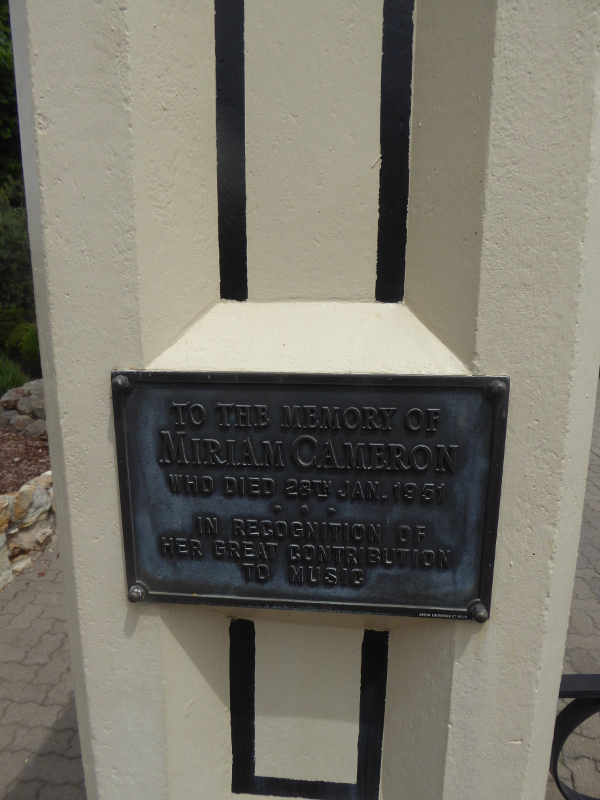
The 1954 memorial gates to the gardens were built in memory of local music teacher Miriam Cameron – fine ironwork done by local school kids.
The final story on the Horsham Botanic Gardens on the Trove database concerned a violent hail storm in December 1954, which smashed windows in the glass house. There’s no glass house these days. I wonder where it was, and when it was taken away?
What are your experiences at Horsham Botanical Gardens?
Anyone know what happened to the old glass house in the gardens, or when it was dismantled?
Can anyone help identify the lion’s head in the arm rests of the vintage benches in the Gardens? What does it signify?
Does anybody still remember Miriam Cameron, the local music teacher? Did she have a connection to the Horsham Botanic Gardens?
Or does anyone just have a good memory about a visit to Horsham Botanical Gardens that they’d like to share here, even from the last few months or years?
Does anyone know where Mr Davey’s private tennis court was, the one used in the Horsham Tennis Championships in the 1920s as an overflow court?
Other links and writings on the Horsham Botanical Gardens
This is a nice post on the Horsham Botanic Gardens, with some background on those gates that mark the entrance.
There’s a brief piece of history of the Gardens on this piece on the Wilkins Tourist Maps website.
According to this news article from February 2021, the Gardens are about to get a whole new set of plant and tree labels.
The Melbourne Playgrounds YouTube channel has a brief video tour of Horsham Botanic Gardens.
And I love this 1919 photo of “Granny Brown”, wife of the gardens curator at the time.


We frequently take our grandson Jude, 5, to the gardens because he is fascinated with the big trees and the colorful plants. He also loves the wooden scuplture of Thomas Brown, the former curator who planted the tree that is now his sculpture.
That’s great, Faye. We need future generations to keep loving our botanic gardens!